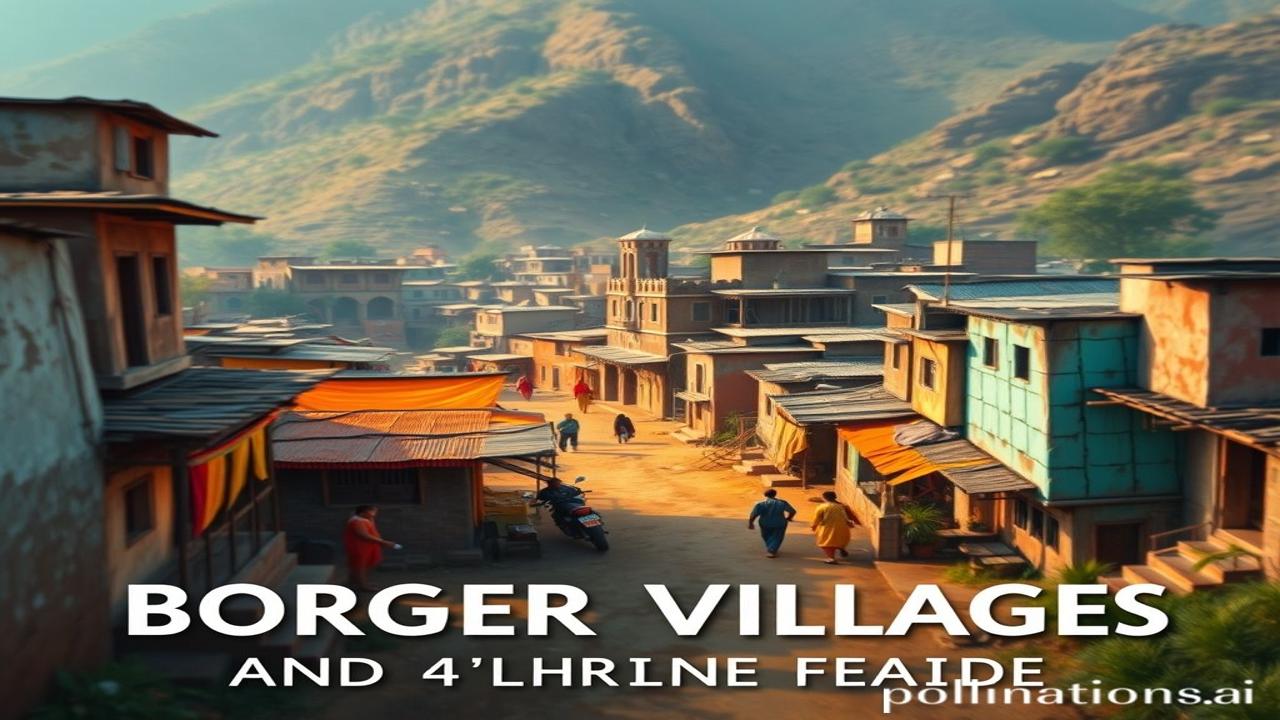Seemaon Ki Kahani: Uncovering the Soul of India’s Border Villages
Kabhi socha hai, ki jo gaon desh ki seema par base hain, unki mitti mein kitne itihaas dafan honge? Waqt ki dhool mein chhupi, yeh kahaniyan na sirf humare kal ki, balki humare aaj ki bhi dastaan hain. Let’s embark on a journey to explore the unique culture of India’s border villages, a culture forged in resilience, shaped by history, and steeped in the spirit of Bharatiyata.
Border Villages: Ek Historical Perspective
Border villages, as the name suggests, are settlements located along the geographical boundaries of a country. In India, these villages have witnessed centuries of historical events, acting as the first line of defense, trading posts, and cultural crossroads. Imagine these villages during the Mauryan Empire, the Mughal era, or even during the British Raj. Each period has left an indelible mark on their culture and traditions.
What makes them truly special is their ability to blend with the cultures across the border. You might find influences of Tibetan Buddhism in villages bordering Tibet, or traces of Pakistani folk music in villages near the Punjab border. They’re a living testament to the fluidity of culture and the interconnectedness of humanity.
Zameeni Sach: Jeevan Aur Log
Picture this: A small village nestled in the Himalayas, where the air is crisp and the prayer flags flutter in the wind. The villagers, rugged and resilient, wake up before dawn to tend to their fields of barley and potatoes. Their faces are etched with the stories of generations who have braved harsh weather and challenging circumstances.
“Ma Rukmini aaj phir mandir ja rahi hai,” says a young girl, tugging at her mother’s pattu (a traditional shawl). “Aaj wahan puja hai, sab log mil kar Bhagwan se prarthana karenge.”
Life in these villages revolves around community, tradition, and a deep respect for nature. The women weave intricate carpets and shawls, each design telling a story of their ancestors. The men, skilled in carpentry and stonemasonry, build houses that can withstand the unforgiving weather. Evenings are spent around the bonfire, sharing stories, singing folk songs, and celebrating the simple joys of life. They are warriors in their own right, not wielding swords, but preserving their culture and identity against the winds of change.
Dharohar Aur Pehchan: The Echoes of Yesterday, Today
Today, the cultural significance of border villages remains strong. We see echoes of their traditions in our art, architecture, festivals, and even in our language. The vibrant colours of their textiles inspire fashion designers. The folk music, with its raw emotion and soulful melodies, finds its way into Bollywood songs. Their resilience and spirit of community inspire us to connect with our roots and embrace our Bharatiyata.
Think of the Namaste gesture – a common greeting throughout India. Its roots can be traced to the ancient customs of border villages, where respect and hospitality are paramount. Even the way we celebrate festivals, with their unique blend of regional and national traditions, reflects the cultural diversity that these villages represent.
Majedaar Tathya: Myth vs. Reality
Log samajhte hain ki border villages mein sirf gareebi aur mushkilein hain… lekin asli sach yeh hai ki yahan zindagi ka ek alag hi rang hai. While challenges certainly exist, these villages are also repositories of rich cultural heritage, ancient wisdom, and a deep sense of community that is often missing in urban settings. They are not just forgotten outposts, but vibrant centers of cultural preservation.
Another common misconception is that these villages are isolated and untouched by modernization. While some remain relatively remote, many are now connected to the rest of India through roads, communication networks, and educational initiatives. This integration allows them to share their culture with the world while also benefiting from modern advancements.
Drishya Aur Bhavnaein: A Sensory Tapestry
Imagine standing in a border village at dawn. The air smells of pine and freshly baked bread. The temple bells chime in the distance, their melody echoing through the valleys. You feel the cold breeze on your skin and the warmth of the sun on your face. The temple walls, smooth and cool to the touch, are adorned with intricate carvings. The sounds of children laughing and goats bleating fill the air. It’s a symphony of sights, sounds, smells, and textures that create an unforgettable experience.
Antim Vichar: A Legacy of Resilience
“Saare jahan se achha, Hindustan hamara…” This iconic line perfectly captures the essence of India and the spirit of its people. The border villages, with their unique culture and unwavering resilience, are an integral part of this national identity. Their stories are a reminder that even in the most challenging circumstances, the human spirit can thrive, and cultural heritage can endure. Let us celebrate and preserve their legacy, for it is a vital part of our collective Indian identity.
